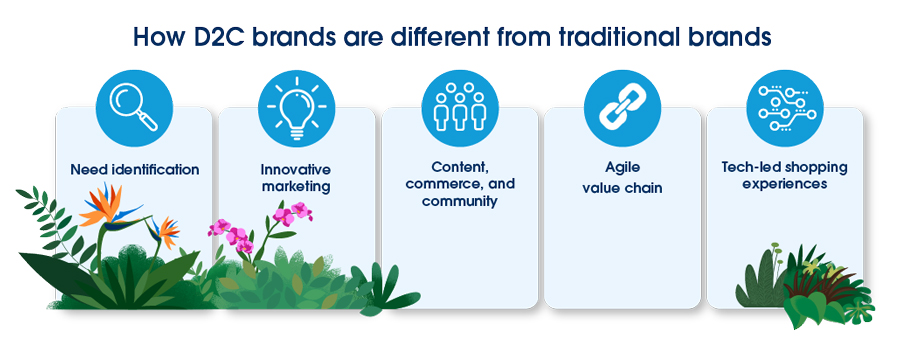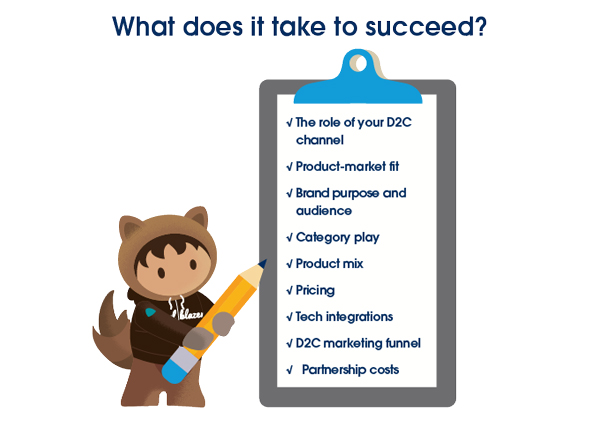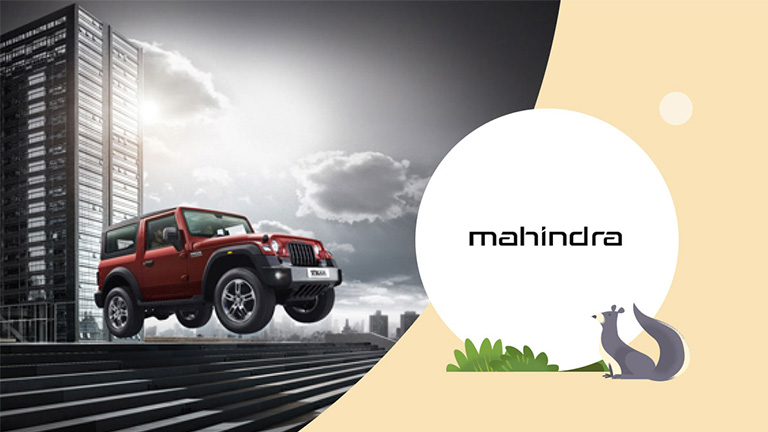The pandemic has fundamentally changed the way we shop, purchase, and engage with brands. Even my mother, who isn’t a digital native, is now ordering groceries from Big Basket, buying her Fabindia bedcovers online, getting the microwave fixed by Urban Company partners, and shopping on Instagram. Her growing confidence to experiment with new brands, products, and services online – minus the ‘touch and feel’ or ‘familiarity’ she once considered a must before any purchase – is one among the millions of stories shaping India’s direct-to-consumer (D2C) movement.
D2C isn’t a new phenomenon. Even before COVID-19, data-driven companies realised that the value from consumer transactions comes not just from the sale, but from the one-to-one customer relationship that develops out of it. The pandemic has only intensified the need for direct customer engagements.
Today, D2C brands are thriving, as online channels (including social media) became the go-to destinations for discovery, inspiration, purchase, and easy delivery. In fact, India is expected to add 200 million online shoppers in the next four years. That, coupled with VC funding, consolidations, IPOs, and market reactions all point to the Indian D2C ecosystem being at an inflection point of rapid growth.
What is D2C and how is it disrupting the market?
D2C is a business model where brands engage, market, and sell to consumers directly; where brands have a majority of their revenue or customer acquisition coming in from direct-to-consumer online channels or have started with online-first distribution before going omni-channel. Since 2016, India has launched 600+ D2C brands and growth momentum suggests that the total addressable market size will touch $100 billion by 2025.
What’s driving this trend? For starters, consumer types are evolving. More women are shopping online, enabling D2C brands to tap into their needs, understand their decision criteria, and come up with suitable offerings. Meanwhile, many product and price gaps remain untapped or underserved by industry incumbents, enabling the emergence of new industry players.
Finally, India’s new age consumers seek instant gratification, convenience, and niche or customised products across categories – be it fashion and lifestyle, beauty and personal care, F&B, or home decor. That sets the stage for D2C brands to establish direct, intimate relationships with consumers.
Other big trends shaping India’s D2C boom include:
- Access to affordable internet data and smartphones
- Growing e-commerce adoption, social media consumption, and online shopping
- The rise of individualism and the ‘lonely economy’ where shopping isn’t just for entire families, but for the self
- Shifting brand loyalties as consumers experiment with new categories, brands, and retailers
- A robust infrastructure and ecosystem for payments, logistics, warehousing, and delivery
- Increased consumer focus on wellness, hygiene, nutrition, and sustainability - categories that weren’t served by traditional retailers, but are now being filled by D2C brands
How are D2C brands different from traditional brands?

D2C players are differentiating themselves in five key ways:
- Need identification: D2C companies have a keen understanding of industry themes and trends, underlying market needs, feedback-driven NPD (new product development), and other nuances that shape shopping journeys. Wakefit, for example, disrupted India’s sleep industry by identifying the need for affordable ergonomic mattresses.
- Innovative marketing: Through digital marketing, as well as social media influencers and storytelling, D2C brands are establishing a direct, meaningful connection with consumers. For example, The Mom’s Co. tapped into social media influencer networks to communicate the brand’s purpose, new launches, and other key messages.
- Content, commerce, and community: By democratising the 3 Cs, D2C brands are strengthening their reach and word-of-mouth marketing. Direct feedback from consumers drives continuous improvement and innovation, while social affirmations via influencers and consumers help attract and retain new customers. Good Glamm Group - a portfolio of beauty & personal care brands - is leading the content-driven commerce revolution, while their user communities help build a strong network of consumers across categories.
- Agile value chain: With rich first-party data (end consumer insights), D2C brands can forecast demand better, and manage both inventories and SKUs in line with what consumers need. Integration across the value chain enables operational efficiencies. For example, FabAlley has its own manufacturing facilities where workflows from design to shelf can be expedited.
- Tech-led shopping experiences: Many D2C brands are enhancing the customer experience through AR-VR enabled virtual trials and consultations. CaratLane, for instance, launched visual 3D imaging for customers to try on jewellery remotely. Many D2C brands are also committed to validating product authenticity, and being transparent about where their ingredients are sourced from. This boosts consumer loyalty, especially among Millennial and Gen Z consumers who care about issues like sustainable sourcing.
D2C is more than a sales channel
D2C isn’t restricted to new age consumer businesses. Even companies that weren’t born on the web are dipping their feet into the D2C space to get closer to consumers. Economic Times reports that several mainstream businesses have acquired online-first brands in the past three years. Colgate Palmolive bought a stake in Bombay Shaving Company, while Emami and Marico purchased majority stakes in The Man Company and Just Herbs, respectively.
Why the increased interest in D2C? Because D2C isn’t just an effective sales channel. It also helps companies understand consumers better. These insights can be used to inform company marketing strategies, fine-tune the ‘innovation flywheel’, and test and launch products/services in mere weeks.
What does it take to succeed in D2C?

- The role of your D2C channel: Will it focus on driving sales, capturing consumer insights, differentiating your brand, or addressing a combination of these factors? Identifying the purpose of your D2C channel will make your D2C strategies more targeted and profitable.
- Product-market fit: Take the time to understand your product-market fit. This means identifying the problem your brand addresses, the solution your portfolio offers, the business case that validates the underlying unit economics, and the potential for your brand to scale. These insights are crucial in determining whether or not a viable D2C business case exists.
- Brand purpose and audience: What does your brand stand for, communicate, and promise? Who are the consumers (and segments) that your brand will cater to? Social proof for your foray into D2C is key.
- Category play: Are you venturing into a low involvement category like staples or groceries where marketplaces like Amazon already do a good job of aggregating products? Or, are you meeting an untapped customer need – like the demand for clean makeup in cosmetics? Or, are you serving multiple categories? Answering these questions will help you outline your addressable market, margins, and potential to scale.
- Product mix: What will make up your online portfolio? Large bundles that offset shipment costs, or an online-only collection? It’s essential to strike a balance across revenue potential, operational feasibility, and consumer benefit.
- Pricing: While price competitiveness is key, premiums can be justified on the back of free delivery, personalisation, exclusive merchandise, and other perks.
- Tech integrations: Make sure your D2C channels are seamlessly integrated with third-party payment and delivery systems, as well as CRM support for smooth customer experiences. Also, enable integrations with marketing automation tools to drive conversions across multiple channels.
- D2C marketing funnel: Consistently iterate and test your marketing tactics. Determine what kind of visuals, pop-ups, videos, and content will engage shoppers throughout their journey. Build interest and trust through social media. Invite consumers to evaluate your products through demos, benefits, and offers. This kind of multi-faceted engagement can help you accelerate conversions.
- Partnership costs: Don’t forget to consider delivery models and packaging costs based on the nature of your portfolio.
D2C channels provide unprecedented access to customer data. But this information is often scattered across silos, limiting visibility. Technologies like Salesforce CDP can help by capturing, consolidating, and harmonising customer data from multiple online and offline touchpoints into a single source of truth. So, you have all the insights you need at your fingertips to engage with relevance, and build customer relationships that last.
What lies ahead?
We believe D2C is here to stay. It unlocks new first-party relationships that wouldn’t have otherwise existed. It also enriches consumer profiling and micro-segmentation which help personalise customer experiences.
There will be a D2C maturity curve. Success factors will vary by category. And distribution will either be online-only or multi-channel. Moreover, as D2C brands scale and mature, many of them make that reverse journey - entering offline retail to further strengthen brand visibility, experience and reach. This omni-channel foray requires investments across talent and channel, including in digitising in-store experiences.
Whichever way it plays out, the times demand that you reassess how best to connect with customers, and own the battleground of consumer relationships. D2C can be your strongest weapon.
To learn how to get a D2C channel up and running quickly, discover the Quick Start for Direct-to-Consumer Commerce.
Read more:
TAG Heuer Delivers Continuous D2C Transformation
Going Direct-to-Consumer, the KIND Way




